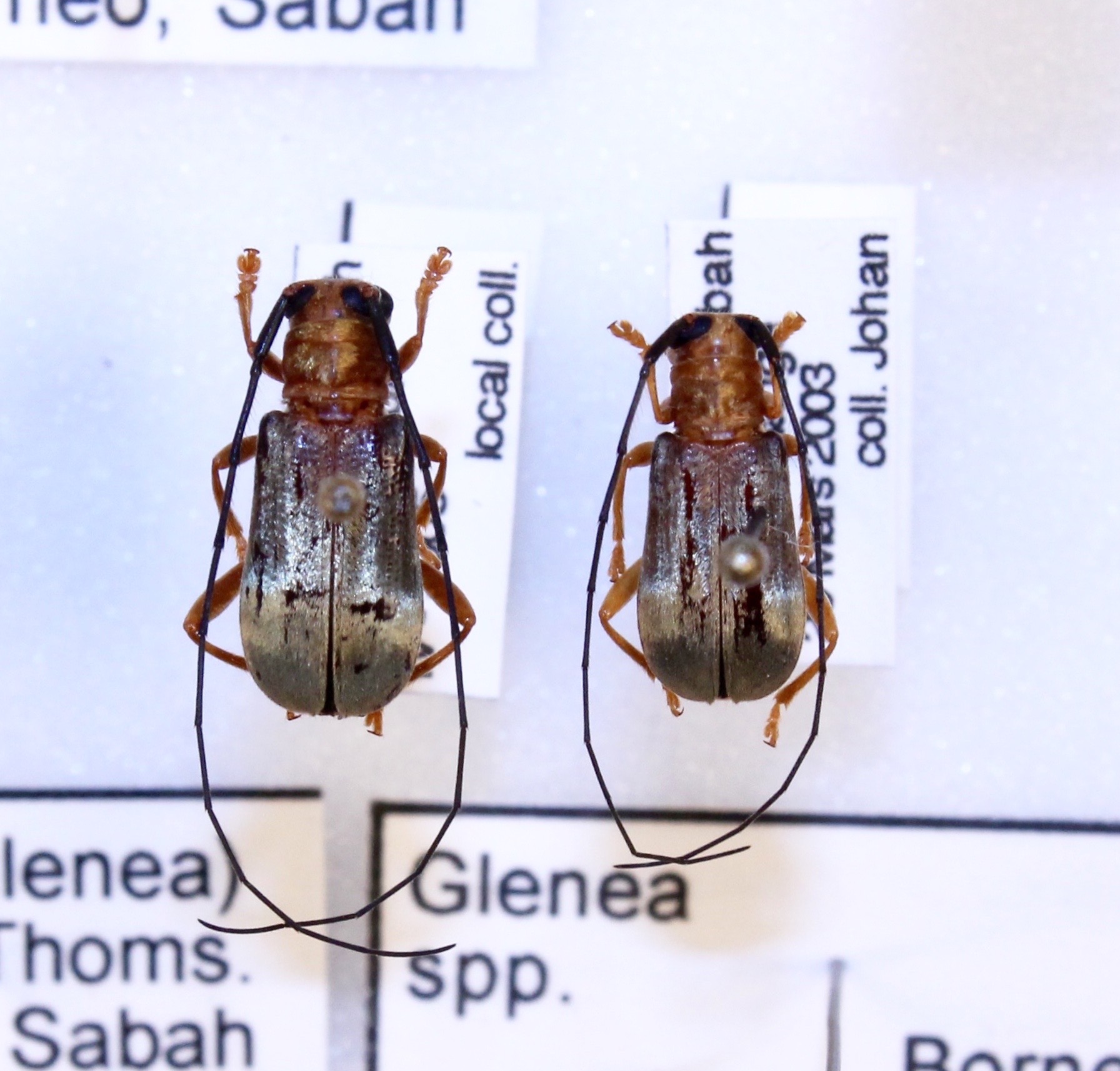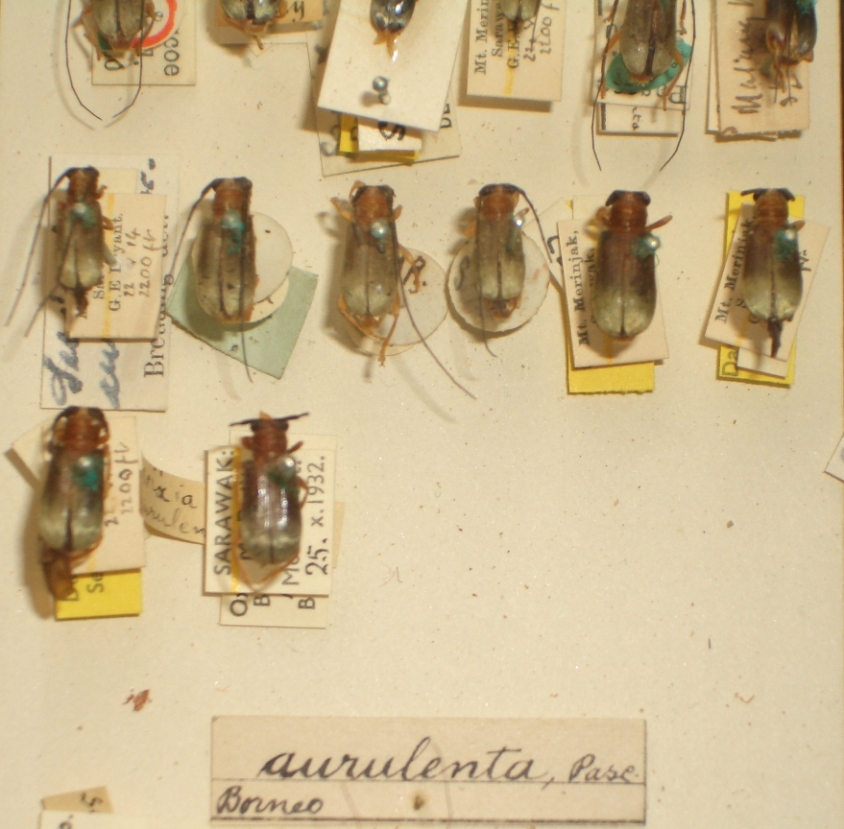| Author |
 Topic Topic  |
|
|
Gontran
Member Rosenbergia
   
Canada
1150 Posts |
 Posted - 31/03/2017 : 15:04:21 Posted - 31/03/2017 : 15:04:21



|

491.13 KB
From Sabah, Trus Madi, 9 mm.
Not Serixia? Or Entelopes or Parentelopes?
Please. |
Gontran |
Edited by - Xavier on 01/04/2017 09:00:06 |
|
|
jplami
Member Rosalia
  
France
656 Posts |
|
|
Gontran
Member Rosenbergia
   
Canada
1150 Posts |
 Posted - 31/03/2017 : 19:10:53 Posted - 31/03/2017 : 19:10:53



|
Quand-même pas mal moins allongé que bien d'autres Serixia?
|
Gontran |
 |
|
|
Xavier
Scientific Collaborator
    
France
12219 Posts |
 Posted - 01/04/2017 : 08:59:31 Posted - 01/04/2017 : 08:59:31



|
| Serixia apicalis Pascoe, 1856 , holotype ici, ou une espèce proche. |
Edited by - Xavier on 01/04/2017 09:03:36 |
 |
|
|
jplami
Member Rosalia
  
France
656 Posts |
|
|
Gontran
Member Rosenbergia
   
Canada
1150 Posts |
 Posted - 01/04/2017 : 15:40:19 Posted - 01/04/2017 : 15:40:19



|
Merci Jean-Philippe et Xavier.
L'épine de l'apex semble moins prononcé que le type de Malaysie occidentale. Mais c'est un tout petit détail. J'inscris S. apicalis. |
Gontran |
 |
|
|
dryobius
Member Rosenbergia
   
USA
1887 Posts |
 Posted - 02/04/2017 : 13:18:45 Posted - 02/04/2017 : 13:18:45



|
Pascoe described 2 species in the paper: S. (s.str.) apicalis and S. modesta. S. apicalis is the genotype.
Per Pascoe, S. apicalis (Malacca) with "a bright luteus spot on the apex" of the elytra. I don't observe that in the photo. The apex of the elytra appears different due to light reflections of the shiny tomentum, I believe.
S. modesta (Borneo) smaller (4 lines = about 8mm ) similar but without apical spot.. Hmmmm maybe closer, but would be nice to see holotype.
With about 28 species (2/3rds described by Breuning) of the nominate subgenus recorded from Borneo, there is no choice but to just say "Serixia sp." |
 |
|
|
Xavier
Scientific Collaborator
    
France
12219 Posts |
 Posted - 02/04/2017 : 13:30:32 Posted - 02/04/2017 : 13:30:32



|
yes, that's why I wrote " Serixia cf. apicalis " |
Edited by - Xavier on 02/04/2017 13:52:31 |
 |
|
|
Gontran
Member Rosenbergia
   
Canada
1150 Posts |
 Posted - 02/04/2017 : 14:49:26 Posted - 02/04/2017 : 14:49:26



|
Thank you Dan and Xavier. Yes, I will stand with Serixia sp.
I also posted two more Serixia species from Sumatra. They are smaller than the ones from Sabah.
And they both have this bright luteus spot on the apex, especially the blond one.
The one from Jumbi has a darker tip of elytra probably because of the reflexion.? |
Gontran |
 |
|
|
dryobius
Member Rosenbergia
   
USA
1887 Posts |
 Posted - 02/04/2017 : 23:21:14 Posted - 02/04/2017 : 23:21:14



|
These specimens from BMNH are S. aurulenta. The one in the upper left that is only partly visible is the type.
The BMNH specimens may all be slightly faded, (or perhaps another poor photograph) and in that case they are a much better match to Gontran's beasties.

403.49 KB |
 |
|
|
Xavier
Scientific Collaborator
    
France
12219 Posts |
 Posted - 03/04/2017 : 17:34:20 Posted - 03/04/2017 : 17:34:20



|
Thank you Dan.
None of pictures is good enough to go further. ID on picture has a limit, and we reach it. |
 |
|
|
Gontran
Member Rosenbergia
   
Canada
1150 Posts |
 Posted - 03/04/2017 : 23:40:51 Posted - 03/04/2017 : 23:40:51



|
| Of course it could match but I agree we can't go further with pictures only, especially for these taxa. Thanks for your efforts. I appreciate. |
Gontran |
 |
|
|
loongfah
Member Purpuricenus
 
Singapore
374 Posts |
|
| |
 Topic Topic  |
|


